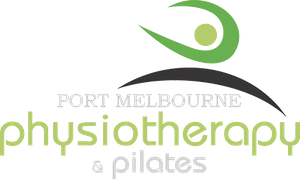For years, the go-to advice for managing sprains, strains, and other acute injuries was the acronym RICE — Rest, Ice, Compression, Elevation. While simple and memorable, research over the last decade has shown that this approach may not always be the best for optimal healing.
Today, evidence-based guidelines encourage us to move toward a more active, holistic model known as PEACE & LOVE. This modern framework recognises that tissue healing is not just about short-term pain relief, but also about long-term recovery, function, and prevention of re-injury.
What is PEACE?
The immediate response in the first few days
P – Protect. Reduce movement or load on the injured area for the first 1–3 days. Avoid complete rest, but allow the tissue some protection.
E – Elevate. Raise the injured area above heart level when possible to help reduce swelling.
A – Avoid anti-inflammatories. This one surprises many people! Early use of anti-inflammatories or ice may actually delay the natural inflammatory process, which is important for healing.
C – Compression. Use elastic bandages or taping to limit excessive swelling and provide some support.
E – Education. Your physio plays a key role here. Good advice early on helps avoid unnecessary imaging and helps to guide your recovery. Patients who understand their injury and recovery are more confident and have better outcomes.
What is LOVE?
The longer-term recovery phase
L – Load. As soon as it’s safe, gradually reintroduce movement and load to the tissue. The amount of movement you should do will be guided by your pain and swelling after activity – Listen to your body!
O – Optimism. Mindset matters! Staying positive and confident about your recovery can actually improve your outcomes.
V – Vascularisation. Light cardiovascular exercise (like cycling or swimming, depending on the injury) helps increase blood flow and supports tissue repair.
E – Exercise. Progressive strength and mobility exercises tailored by your physio are essential. They restore range, function, and help prevent re-injury.
Heat vs Ice
Ice and heat can both play a role in managing symptoms, but they are used at different stages. Ice is most useful in the very early phase (first 24–48 hours) after injury, when it may help reduce pain and limit excessive swelling, or after activity if the area feels hot, swollen, or throbbing. However, evidence shows that ice does not speed up healing, and should only be used as a short-term comfort measure. Heat, on the other hand, should be avoided in the first 24–48 hours when bleeding and swelling risk is highest, but it can be very helpful later in recovery for easing stiffness, relaxing muscles, and improving comfort during rehab. Ultimately, neither ice nor heat heals the injury — they are tools for symptom control.
The way we manage acute injuries has moved beyond the old RICE method. While ice and heat may help with short-term comfort, they are not the key to recovery. Modern research highlights that optimal healing comes from respecting the body’s natural processes and taking an active role in rehabilitation. The PEACE & LOVE framework provides a clear, evidence based guide: protect and support the injured area in the first few days, then progressively load, exercise, and stay optimistic as you recover. With the right balance of early protection, gradual activity, and physio-led guidance, you can reduce pain, restore function, and get back to doing what you love, safely and confidently.
- Mitch

